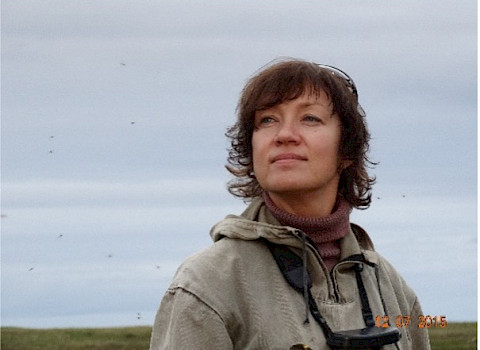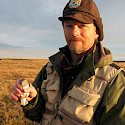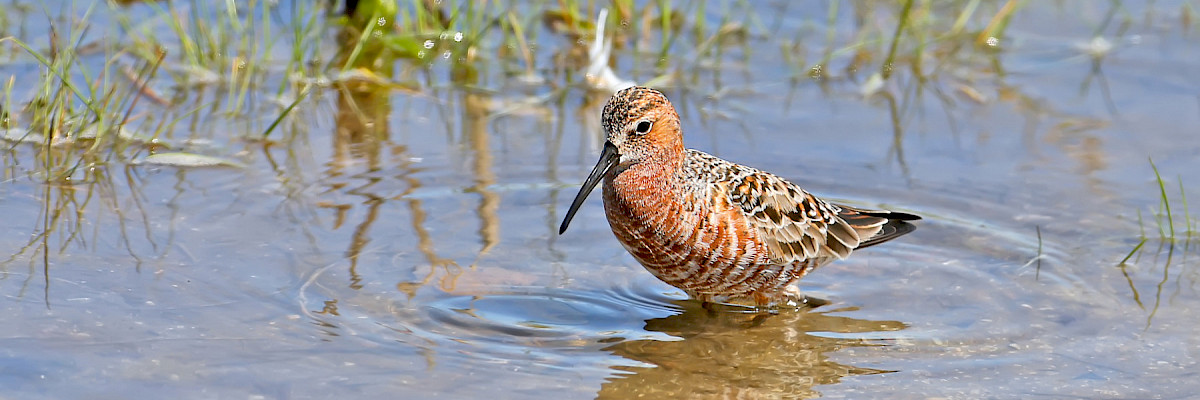
AMBI Central and East Asian Flyways
In the Central and East Asian Flyways, AMBI works with partners to address priority conservation issues including:
- identifying and securing habitats along the flyway,
- preventing illegal hunting,
- improving the quality and quantity of species population data,
- addressing other threats including environmental contaminants.
AMBI has identified 5 objectives and 40 actions in the flyway work plan.
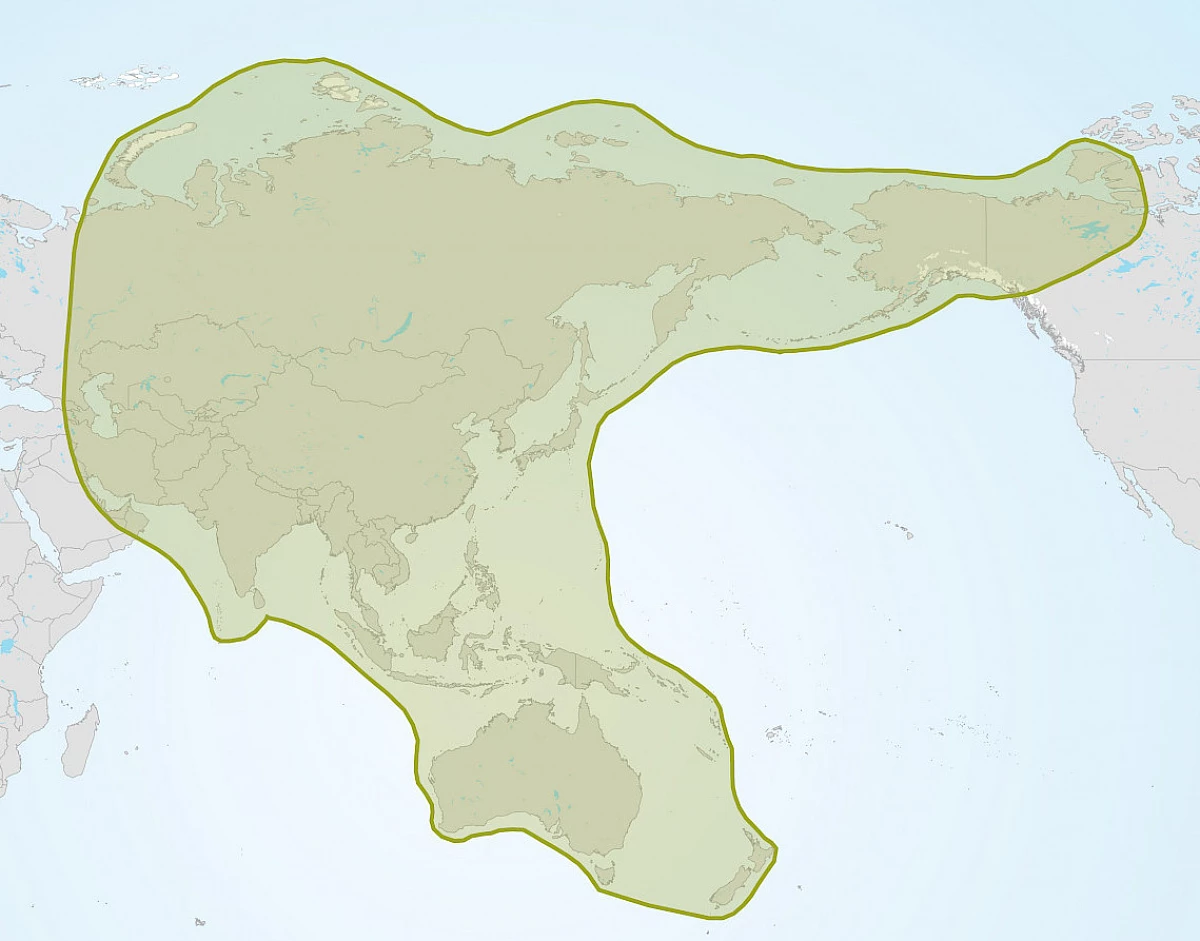
Central and East Asian Flyways Priority Species
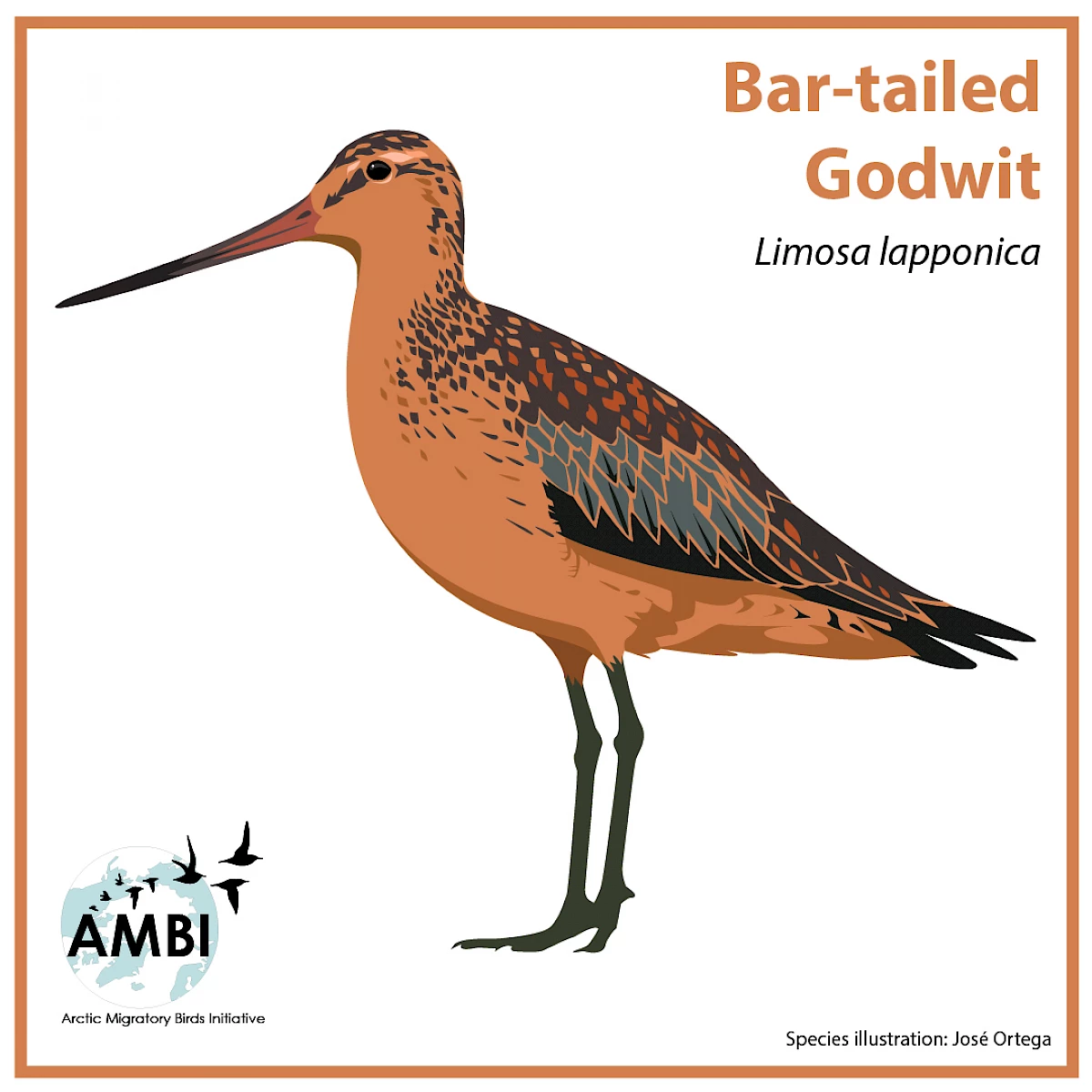
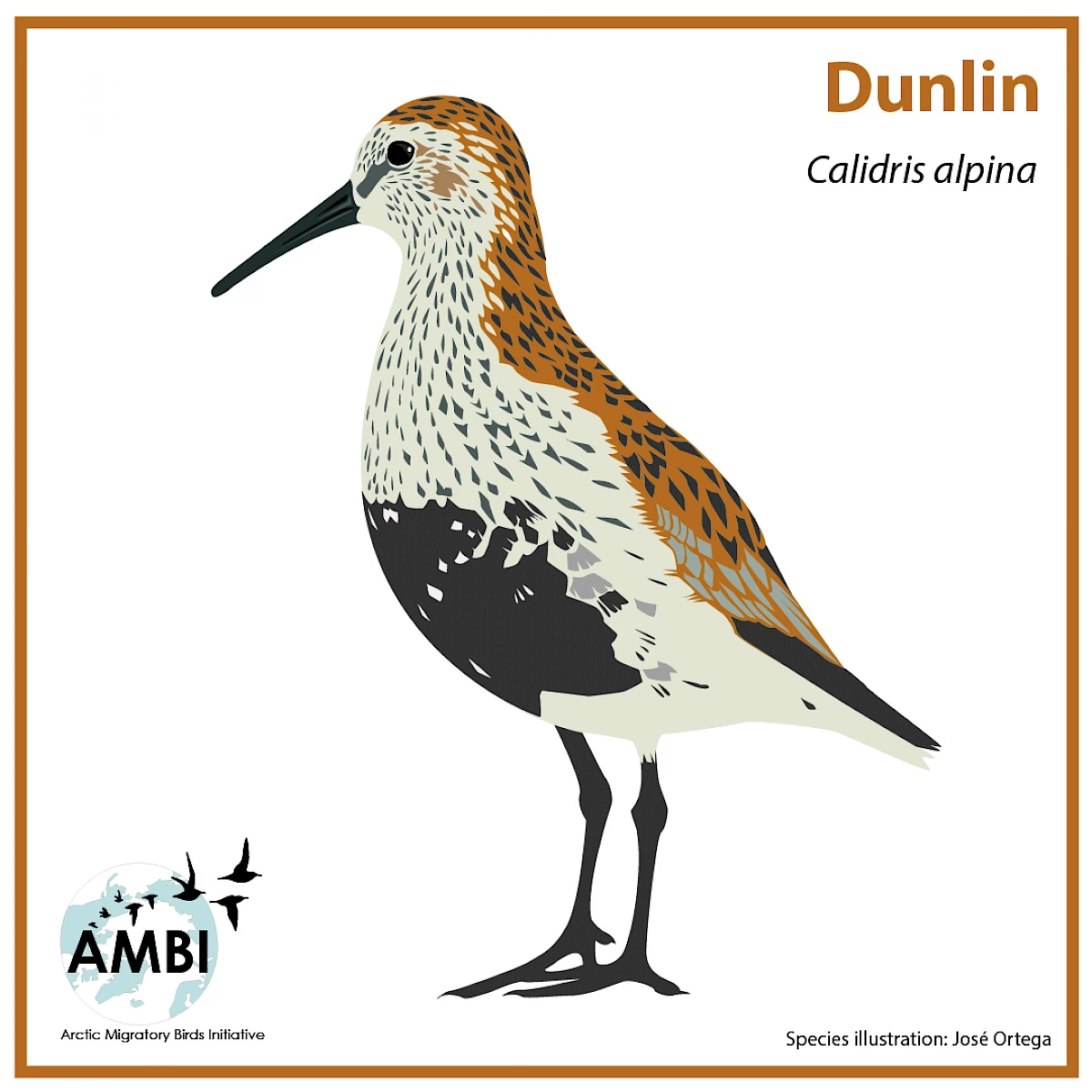
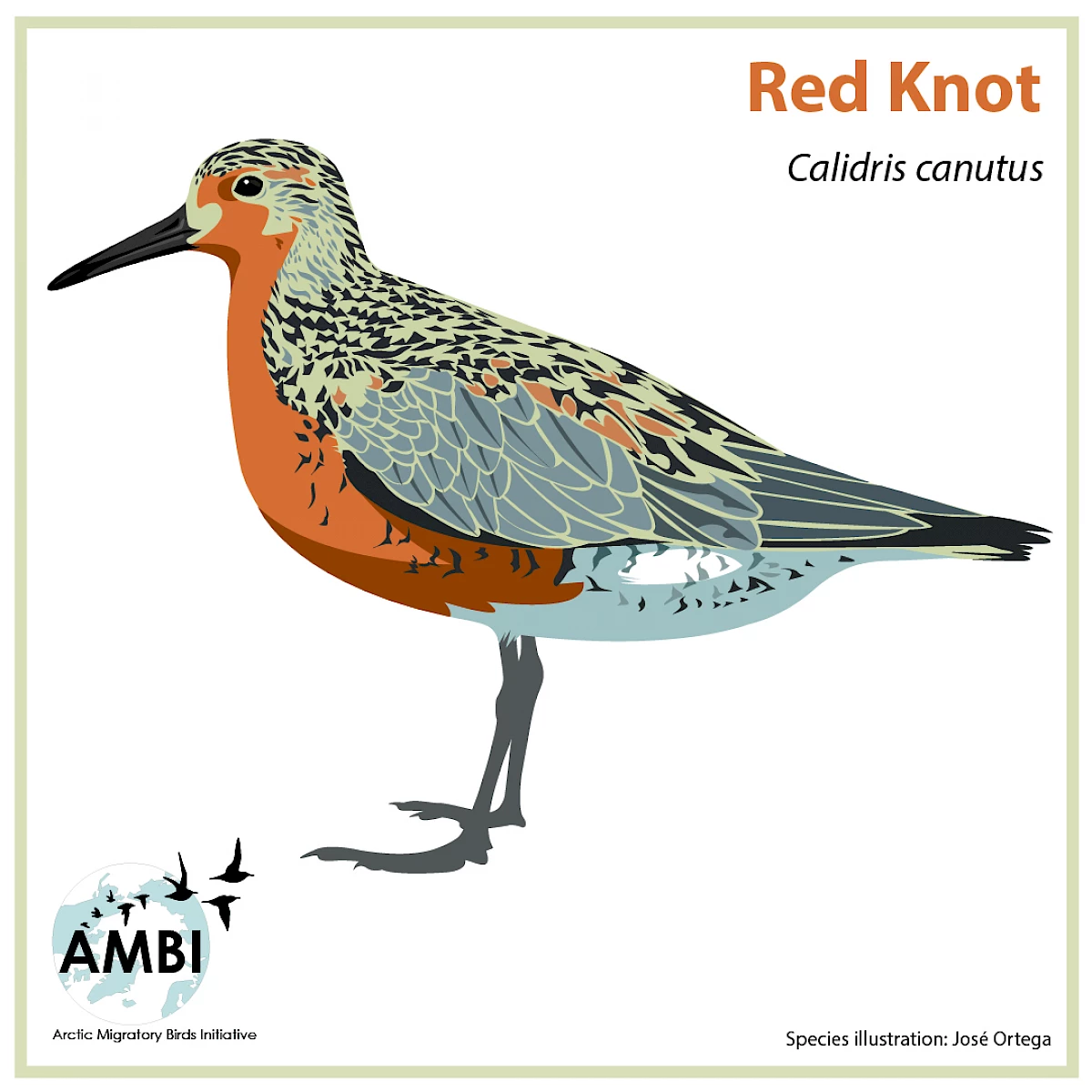
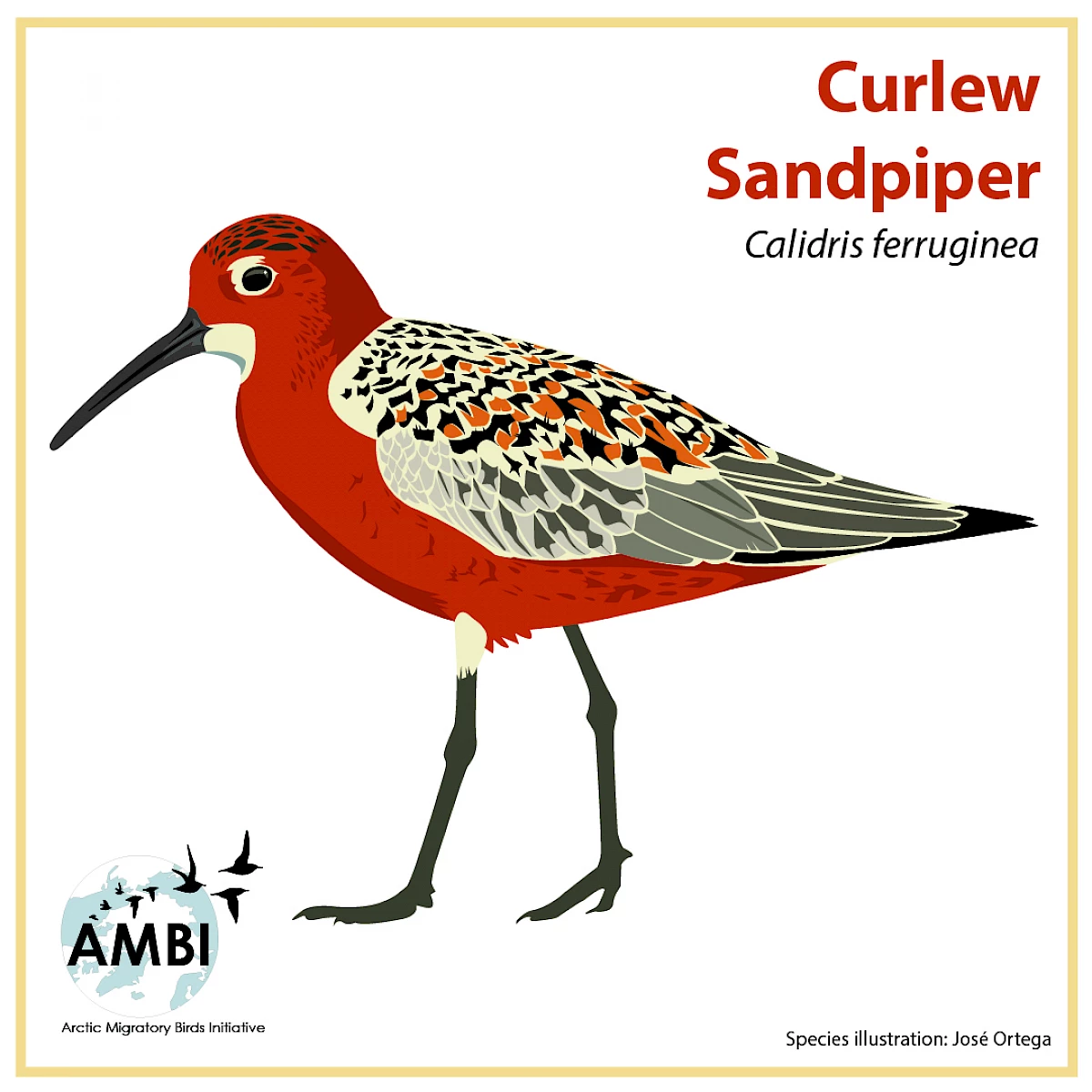
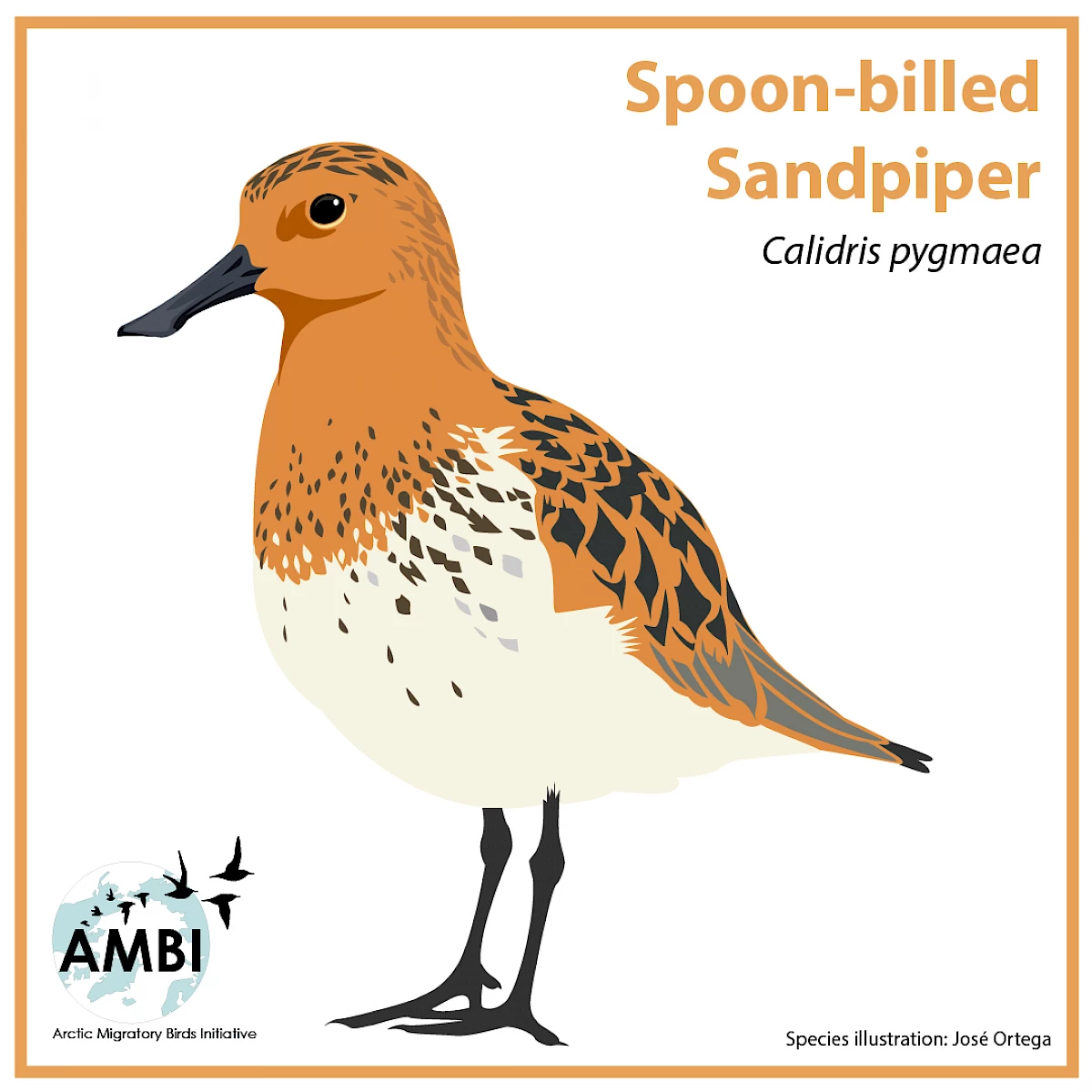
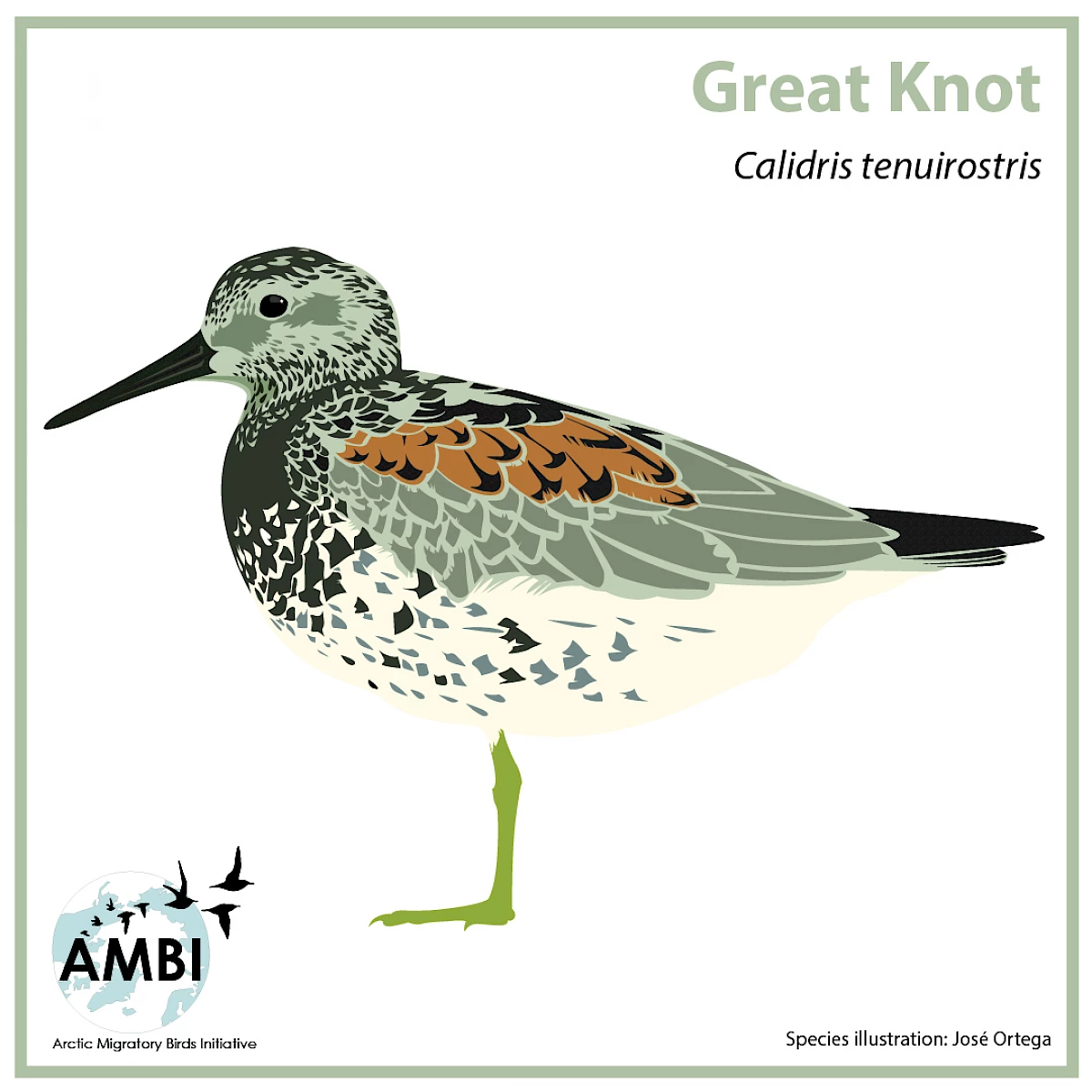
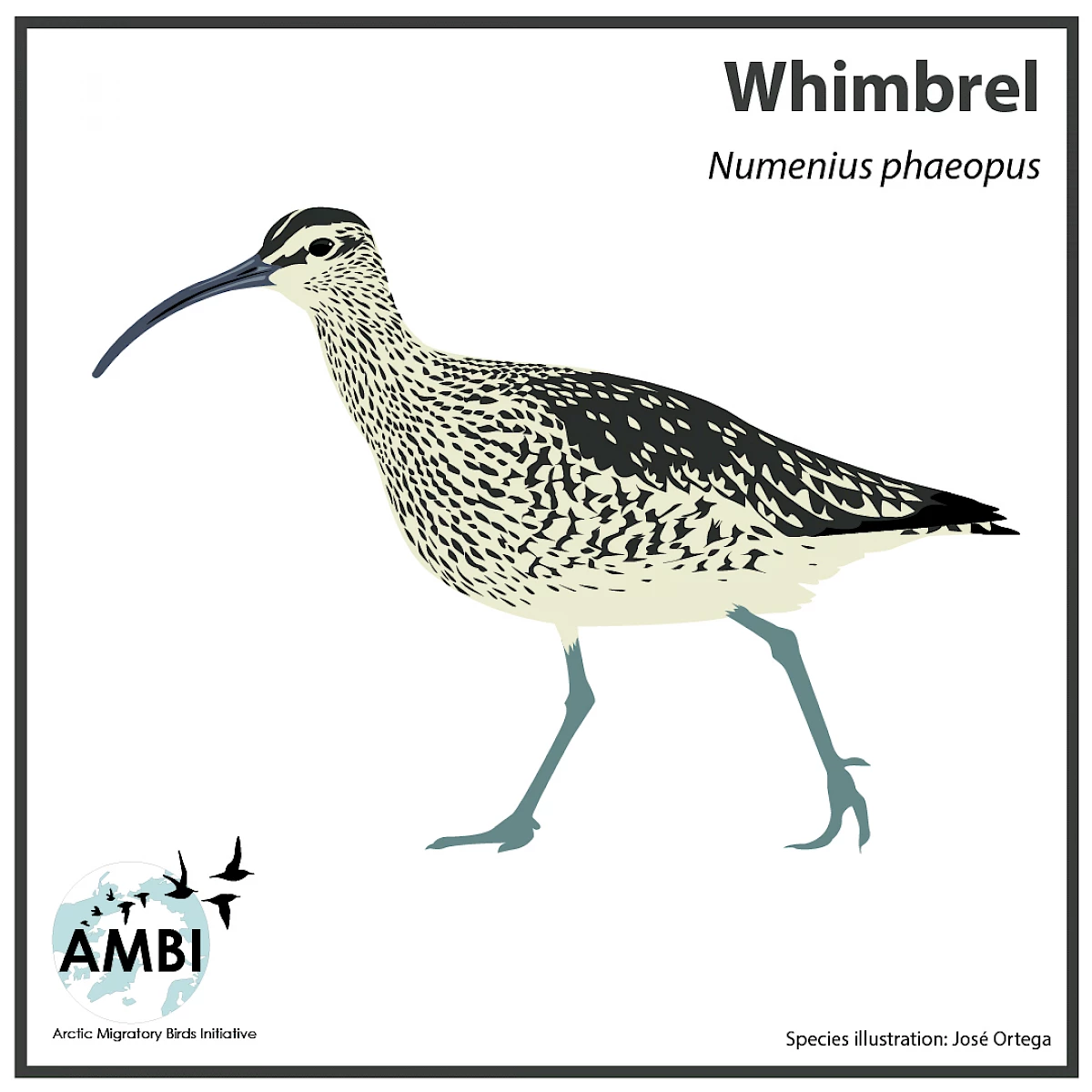
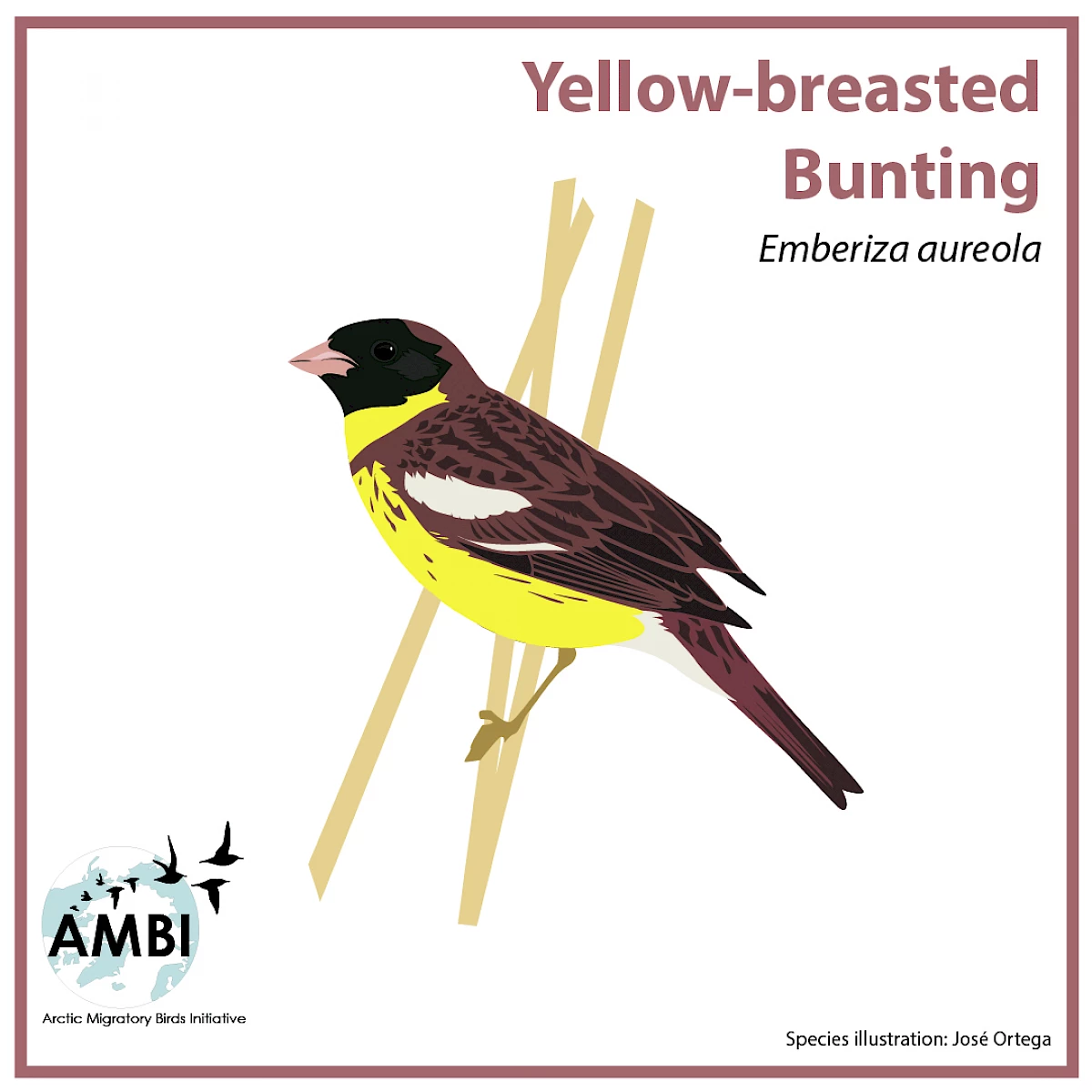
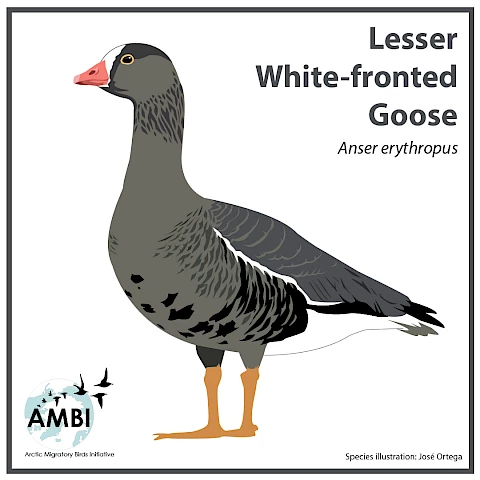
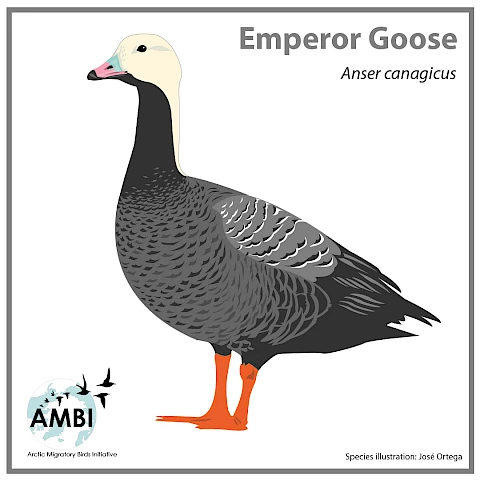
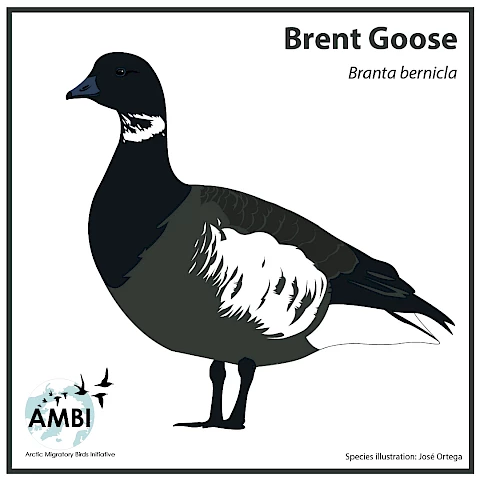
AMBI Central and East Asian Flyways Work Plan 2019-2025
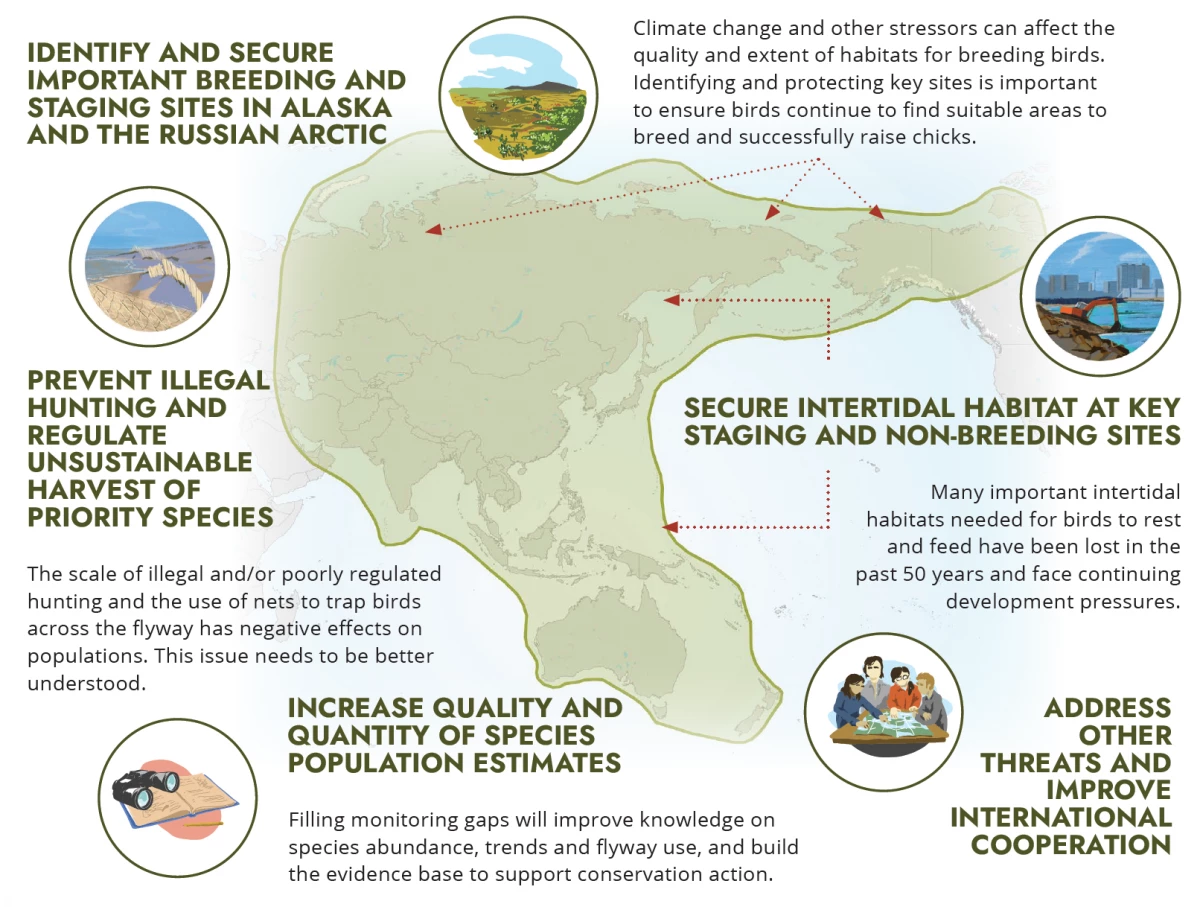
OBJECTIVE 1: IDENTIFY AND SECURE IMPORTANT BREEDING AND STAGING HABITATS OF KEY AMBI-CEAF MIGRATORY BIRD SPECIES IN ARCTIC RUSSIA AND ALASKA, WITH A FOCUS ON SPOON-BILLED SANDPIPER, BAR-TAILED GODWIT, RED KNOT, DUNLIN, EMPEROR GOOSE AND BRANT GOOSE.
Action 1.1 (Russia): Improve conservation work on Spoon-billed Sandpiper (SBS) and other AMBI priority species in the breeding grounds including addressing climate change related threats.
a. Finalize creation of the “The Land of Spoon-billed Sandpiper” Nature Park to protect the majority of remaining SBS breeding habitats in Chukotka. Encourage protection of SBS breeding grounds at Klinokvstrema Bay (Anadyr Estuary) and along the coasts Kresta Bay and Meechkyn Spit.
b. Survey potential breeding Spoon-billed Sandpiper sites in Chukotka and Penzhina Bay (Kamchatka) and revisit sites not surveyed for more than 10 years, to update the status of the species at these locations and develop local conservation plans.
c. Ensure continuation of support for the ‘head-starting’ program in Meinypilgyno as the most efficient tool to increase breeding productivity of the Spoon-billed Sandpiper.
d. Improve knowledge on breeding distribution, population productivity and local threats to Brant Goose, Bar-tailed Godwit and Dunlin, as well as Red and Great Knots in the Eastern Russian Arctic, and provide information necessary for improvement of conservation measures.
Action 1.2 (Russia): Identify important breeding and staging areas in coastal areas of Russia for AMBI priority species, and where possible encourage and assist their nomination as EAAF Partnership Network Sites with follow-up conservation actions, prioritizing areas in Sakhalin and Kamchatka (Ust’ Khairuzovo, Moroshechnaya estuary, Bay of Tyk and others).
Action 1.3 (United States): Undertake bird surveys and tracking studies to improve knowledge of important breeding and staging sites for priority species in Alaska.
a. Encourage monitoring surveys of breeding shorebirds on the Arctic Coastal Plain, with a focus on the 1002 Area of the Arctic National Wildlife Refuge and the National Petroleum Reserve, Alaska.
b. Encourage deployment of tracking devices on priority species, and other representative species, to determine connections between breeding and migration stopover sites in the Arctic, with a focus on the Qupałuk EAAFP Site and other important breeding/staging areas.
Action 1.4. (United States): Protect previously identified important breeding and staging areas.
a. Encourage and assist in the nomination of important sites to the EAAFP Site Network.
b. Inform the environmental review process when developments are pending at key staging and breeding sites.
Action 1.5. (Russia/United States): Share experience and methodologies for surveying shorebird distribution, monitoring population size and trends, conducting demographic studies, and managing habitats of priority species and other migratory birds.
a. Share experiences associated with monitoring and conserving breeding shorebirds in Beringia and elsewhere along the CEAF via cooperation projects and exchange visits between Russian and United States specialists, with an initial focus on existing field stations studying Spoon-billed Sandpipers in Chukotka and Dunlin at in Alaska.
b. Cooperate in organizing in 2019 a waterbird aerial survey in the Eastern Russian Arctic using a Russian light plane and observers trained in Alaska. Repeating surveys that were conducted in collaboration with the U.S. Fish and Wildlife Service in the 1990s to 2000s.
c. Summarize knowledge on Emperor Goose distribution, status, trends and harvest evaluations in Russia and present the results at the North American Arctic Goose Symposium in 2020 and other relevant forums in Russia and internationally.
Action 1.6 (Russia/United States): Explore the opportunity to initiate a seabird monitoring project in Chukotka and increase cross-Beringia information exchange
OBJECTIVE 2: SECURE INTERTIDAL AND ASSOCIATED HABITAT FOR AMBI PRIORITY SPECIES AT KEY STAGING AND WINTERING SITES IN THE CEAF.
Action 2.1 (Russia): Ensure improvement of protection of the Russian Far East coastal shorebird stopover sites, by providing information to support local and national decision making on key habitat identification and conservation, including consideration of the new Nature Park in Chukotka and recovery of closed protected area at Moroshechnaya river mouth in Kamchatka.
a. Undertake surveys at selected key shorebird concentrations in the Russian Far East during passage seasons and develop habitat mapping, local awareness raising and conservation plans for key areas particularly for areas identified by recent satellite tracking of Spoon-billed Sandpiper and other species.
b. Initiate cooperation with administrations of coastal regions within the Far East of the Russian Federation (Chukotskiy Autonomous District, Sakhalinskaya and Magadanskaya Oblast’, Kamchatskiy, Khabrovskiy and Primorskiy Kray) as well as the Sakha (Yakutia) Republic and corporate sector (mineral resources extrication companies etc.) on conservation of shorebirds and environmental education.
Action 2.2 (United States): Gather better information on the abundance, distribution and habitat use of Dunlin and Bar-tailed Godwits at spring and fall staging sites in Alaska.
Action 2.3 (China): Enhance protection of Jiangsu Coast ecosystem, especially the Rudong and Dongtai areas for Spoon-billed Sandpiper and other Arctic-breeding shorebirds considering World Heritage Site Nomination requirements.
a. Conduct monitoring on all sites important for Spoon-billed Sandpiper in southern Jiangsu including Tiazoini and Dongling areas.
b. Encourage local governments of southern Jiangsu province to initiate developing of protected areas and infrastructure for birdwatching in key locations for Spoon-billed Sandpiper and other Arctic-breeding shorebirds. Promote exchanging best practices of intertidal conservation from Arctic Council States and Observer countries.
c. Encourage research community in China and internationally to initiate the study of dynamics of Jiangsu intertidal areas and coastal habitat modelling to advise on best planning for long-term conservation management.
d. Undertake public awareness raising and develop local and national pride in migratory stopover and wintering sites including support for Spoon-billed Sandpiper conservation campaign coordinated by local government with support from foundations and non-government organizations. Work with local authorities and communities to address unintentional catch of shorebirds by fishing nets as well as Spartina regulation and encourage restoration of coastal habitats with particular attention to high-tide roosts of shorebirds along Jiangsu coasts.
e. Promote more banding of Arctic-breeding shorebirds in more sites and support satellite tracking of Spoon-billed Sandpiper under the leadership of the National Bird Banding Centre (NBBC) of China.
Action 2.4 (China): Enhance protection of the Luannan Coast especially Nanpu, Tangshan for Red Knot and other Arctic-breeding shorebirds.
a. Demonstrate optimised management for Arctic-breeding shorebirds of a complex of intertidal, fish/shrimp ponds and salt works.
b. Develop ecotourism and public awareness raising activities to promote local and national pride in the global importance of Nanpu.
c. The National Bird Banding Centre of China to organize the marking and satellite tracking of Bar-tailed Godwits at Bohai Bay, aiming to better understand migration pattern of Limosa lapponica anadyrensis subspecies to enhance conservation planning and future cooperation with Russia to protect this subspecies.
Action 2.5 (China): Enhance protection at Yalu Jiang, Liaoning for Bar-tailed Godwit, Dunlin, Great Knot and other Arctic shorebirds.
a. At Yalu Jiang National Nature Reserve, support development and implementation of a management plan to halt further loss of intertidal area and conserve and restore habitat for feeding and roosting.
b. Support public awareness raising activities to highlight the global importance of the site and develop local and national pride and ownership including international sharing experience in organising festivals.
Action 2.6 (China): Increase knowledge of key staging and wintering Arctic-breeding shorebirds sites in southern China (Guangdong, Guangxi and Fujian provinces) and improve conservation status of these sites.
a. Make a joint National Bird Banding Centre of China/CAFF winter survey at Leizhou Peninsula and Fangchengang area and surrounding coasts to improve knowledge on distribution and protection of Spoon-billed Sandpiper. Run local small workshops in both locations to share information with local conservation authorities and further conservation planning.
b. Make an inventory of key sites for Spoon-billed Sandpiper in South China including sites identified by satellite tracking, assess the conservation status and make conservation recommendations. Increase poaching mitigation efforts at these sites.
c. Make efforts to apply best practices and knowledge on coastal conservation and habitat restoration, including technical cooperation and scientific exchange with other comparable regions; increase of education and awareness and support by conservation foundations.
d. Promote development of more bird banding and tagging activities under leadership of the National Bird Banding Centre of China.
Action 2.7 (Republic of Korea): Support efforts to reverse declining trends of AMBI priority species (SBS, Great Knot, Dunlin and other) and improve habitat conservation along the flyway through sharing knowledge and international cooperative projects.
a. Take the lead in the development of approaches in creation of the artificial high-tide roosting sites for Arctic-breeding shorebirds and encourage sharing best practices and knowledge on protection and management of high-tide roosts located at reclaimed intertidal areas along the flyway.
b. Explore the possibility of supporting mainstreaming of AMBI priorities into an Association of South-East Asian Nations (ASEAN+) Network of migratory bird sites.
c. Discuss the opportunities to cooperate with the Russian Federation in restoring the numbers of Spoon-billed Sandpipers in the breeding and stopover grounds.
Action 2.8 (Republic of Korea): Promote the importance of conserving Korea’s remaining intertidal shorebird zones for the protection of Arctic-breeding and other migratory waterbirds including the Spoon-billed Sandpiper, Great Knot, and Dunlin.
a. Continue to promote the nomination of the Yellow Sea as UNESCO World Heritage Site.
b. Encourage support of building a “Caring for Coasts” Initiative under the CBD and Ramsar Convention.
Action 2.9 (Republic of Korea /China): Encourage the Governments of China and Republic of Korea to develop measures to address Spartina to protect high ecological value sites for AMBI priority species to ensure meeting the criteria of World Heritage Site nomination.
Action 2.10 (Republic of Korea /China): Seek China and the Republic of Korea AMBI focal points to develop Resolutions of Cooperation with CAFF Secretariat to guide future cooperation.
Action 2.11 (Singapore): Encourage utilizing the ASEAN Flyway Network (ASEAN AFN) as a platform to engage ASEAN Member States to mainstream AMBI priorities to promote conservation of wetlands and migratory waterbirds. Explore the possibility of collaborating with ASEAN AFN on a key wetland site conservation program.
Action 2.12 (Japan): Further develop dialogue to promote cooperation on the conservation of Arctic-breeding migratory birds in the CEAF with a focus on selected priority actions identified within this work plan, including conservation of AMBI priority species in Japan and in the flyway, building on existing bilateral migratory bird agreements.
Action 2.13 (India): Work with the Ministry of Environment, Forest and Climate Change, Bombay Natural History Society and other relevant Indian institutions to assess the status and trends of AMBI priority species and promote conservation measures.
a. Develop a project in India to assess wader’s conservation needs in the region, help to shape a national-waders working group and run the first national workshop on wader/shorebird conservation focused on AMBI priority species. CAFF to delegate AMBI representatives to join AMBI related events and field projects mentioned in this work plan.
b. Initiate a survey of potential wintering sites for the Spoon-billed Sandpiper along the coasts of Bay of Bengal using Landsat based habitat modelling provided by the Spoon-billed Sandpiper Task Force.
c. Increase ringing, colour marking and tagging of AMBI priority species in India to improve the knowledge for conservation purposes.
d. Control the invasion of terrestrial vegetation into the mudflats, e.g., at Chilika Lake.
e. Develop an awareness program for fishermen fishing with gillnets in marshes adjoining shorebirds habitats.
f. Work on restoration of abandoned saltpans as shorebird habitats.
Action 2.14 (all countries): Explore the possibilities for a collaborative pilot project on Spartina control, with CAFF’s Arctic Invasive Alien Species Action Plan International Coordinating Group (ARIAS ICG) and other partners.
Action 2.15 (Singapore): Cooperate on a satellite tracking program for key migratory waterbird species within the CEAF.
Action 2.16 (EAAFP): Cooperate with relevant governments and other partners to extend the African-Eurasian Critical Site Network Tool 2.0 (CSN2.0) to the EAAFP to develop, improve and promote the accessible inventory of nationally and internationally important coastal and inland sites for Arctic breeding waterbirds along the flyway.
OBJECTIVE 3: PREVENT ILLEGAL HUNTING AND REGULATE UNSUSTAINABLE LEGAL HARVEST OF ARCTIC MIGRATORY BIRDS ALONG THE FLYWAY, WITH A FOCUS ON SPOON-BILLED SANDPIPER, LESSER WHITE-FRONTED GOOSE, BAR-TAILED GODWIT, AND OTHER PRIORITY SPECIES.
Action 3.1 (Russia): Initiate surveys of hunting pressure and support development and implementation of national and regional strategies and action plans for the elimination of illegal harvest of birds in the Russian Far East.
a. Evaluate hunting pressure on Arctic-breeding shorebirds in stopover areas of Spoon-billed Sandpiper and other AMBI priority shorebird species in Kamchatka, Sakhalin and mainland coasts of Sea of Okhotsk. Analyse ring recoveries stored in the Russian Bird Ringing Centre to identify areas of high hunting pressure on AMBI species.
b. Conduct surveys in selected areas of the Russian Far East to identify key concentrations of shorebirds, Lesser White-fronted Goose and Asian Black Brant during migration. Provide local/regional governments information to aid decision making to implement conservation actions including preparation of regional action plans. Plans should include information on raising awareness of impacts of illegal harvest and methods to reduce and eventually eliminate pressure on AMBI priority species.
c. Work with federal and regional legislators to reduce/close sport hunting of all migratory shorebirds and geese of unfavourable conservation status in Eastern Russia.
d. Update Russian national and regional Red Data books with key declining Arctic-breeding migratory species of CEAF to be included in new editions and initiate planning and implementation of national and regional activities for their conservation.
e. Develop cooperation with the Wildlife Conservation Society (WCS) in conservation of Arctic-breeding shorebird habitats, creation of protected areas and mitigation of illegal hunting at the Russian Far East including educational workshops at WCS Terney base.
f. Organise round-table discussion on evaluation of hunting pressure on shorebirds in the Russian Far East during the Wader Research Group Conference in Minsk in 2019 and relevant events in following years.
Action 3.2 (United States): Conduct outreach, assess the magnitude and impacts of legal subsistence harvest on priority birds in Alaska, with a focus on Emperor Goose and Bar-tailed Godwits.
a. Develop outreach materials on priority species that are harvested in the spring and summer subsistence harvests; materials should be in English and relevant Indigenous languages.
b. Work with the Alaska Migratory Bird Co-management Council, U.S. Fish and Wildlife Service Refuge Information Technicians, the Alaska Department of Fish and Game, and other relevant entities as appropriate, to discuss the status of priority species with rural Alaskans, and the role they play in regulating these populations.
c. Continue to collect harvest data, with a special focus on Emperor Goose and Bar-tailed Godwit.
d. Improve Arctic-breeding shorebird harvest data collection by incorporating recent ethnographic information on identification into survey materials.
e. Conduct population modelling to assess how subsistence harvest and other limiting factors are impacting population sizes of priority species.
f. Should levels of harvest be found to have a measurable impact on the priority species, work to:
- promote a sustainable legal harvest of relevant species by working with management bodies,
- develop outreach programs to reduce level of harvest, and
- develop classroom programs to educate students about impact of harvest.
g. Share best experiences with the Russian parts of Beringia and other areas of the Russian Far East on how to develop meaningful dialogue with local communities on sustainable hunting of waterbirds and the improvement of management practices.
Action 3.3 (China): Support development and implementation of national and regional strategies, action plans and implementation activities for the elimination of poaching of birds in China.
a. Promote upgrade of the Critically Endangered Spoon-billed Sandpiper to the highest class of national protection in China and follow up with development of National Action Plan and adequate conservation measures of the species and it’s habitat.
b. Work with local/regional governments to strengthen patrolling and law enforcement at all key coastal sites used by Spoon-billed Sandpiper, to prevent illegal poaching and conserve the population.
c. Improve survey and monitoring efforts to increase the knowledge and distribution of priority species including Brant Goose, Dunlin, Bar-tailed Godwits, and Great and Red Knots at stopover and wintering grounds to assess levels of and to mitigate poaching.
d. Better understand and address the drivers behind the system of poaching and marketing of wild birds.
e. Support the development of regular monitoring and enforcement actions at key markets and restaurants focused on illegal wild birds in cooperation with the National Grasslands and Forestry Administration, regional governments, law enforcement organizations and food control inspectors.
f. Support the organization of national and regional workshops in China to address shorebird conservation and follow up actions on implementation including poaching control.
Action 3.4 (India): Work with the Ministry of Environment, Forest and Climate Change, Government of India, Bombay Natural History Society and other Indian ministries and research institutions to promote AMBI work and address illegal hunting issues.
a. Host a side event on AMBI implementation in India during CMS COP in February 2020.
b. Initiate a project in India to assess the illegal hunting of waders and other birds and develop poaching mitigation measures at regional and national levels.
Action 3.5 (All countries): Engage with the EAAFP and the CMS Task Forces on Illegal Killing/Hunting, Taking and Trade of Birds to develop implementation of actions to address this threat to migratory Arctic-breeding birds.
a. Coordinate with EAAFP partners, NGOs and other national and subnational organizations to raise funds and promote implementation actions to address the illegal hunting and unsustainable harvest issue.
b. Work on preparation of comprehensive overviews of the level of illegal hunting and unsustainable harvest problems within the flyway.
c. Support the preparation of case studies aimed at highlighting solutions to poaching regulations and illegal harvest at demonstration sites, including raising awareness of the issue, conservation planning and alternative livelihood programs following methodology developed by the Spoon-billed Sandpiper Task Force in Bangladesh and Myanmar, and the Mediterranean experience accumulated by the CMS.
d. Follow up on the Southeast Asia situation analysis to ensure adequate conservation measures in locations where Arctic-breeding migratory birds are subject of illegal hunting including recently identified areas in northern Vietnam and norther Sumatra (Indonesia) and new areas to be identified in 2019-2023.
Action 3.6 (All countries): Work to curb the use of equipment for illegally captured birds.
a. Work to regulate the production, sale, and use of mist nets including at an international level, and promote the best practices from Arctic Council States and Observer countries.
b. Work with local fish industries and local communities to reduce unintentional catch of shorebirds by fish nets with special attention to Spoon-billed Sandpiper stopover sites.
Action 3.7 (All countries): Raise the profile of illegal hunting, taking and trade of migratory Arctic birds by linking it to broader forums and discussions on illegal wildlife trade, the bushmeat trade, and wildlife crime discourse in CBD, CITES and other relevant organizations.
Action 3.8 (All countries): Support an illegal hunting technical workshop to share expertise and address illegal hunting along the flyway.
Action 3.9 (All countries): Develop or support monthly mist net surveys and removal activities in key Spoon-billed Sandpiper sites, using the positive experiences in China as an example.
Action 3.10. (All countries): Initiate a research project to understand sustainable harvest, management practices and bird poaching mitigation along the Central and East Asian Flyway considering cultural traditions with the equitable engagement and partnership of Arctic Indigenous Peoples and Indigenous Knowledge.
Action 3.11 (USA and Russia): Work to assess legal and illegal Emperor Goose harvest in Russia and Alaska to develop a consistent Beringia-wide legal framework for the management and long-term sustainability of the species that works within the Alaska Migratory Bird Co-Management Council and other Indigenous management organizations.
Action 3.12 (Russia, China, India): Prioritise conservation of Eastern and Central Asian populations of Lesser White-fronted Goose (LWFG) and reverse their declining trends including analysis of existing satellite tracking and migratory movement data.
a. Prioritise conservation of LWFG on national and regional levels including development of regular monitoring schemes in key locations within the range.
b. Develop collaboration of Bird Ringing/Banding Centres and other interested institutions in China and Russia to prioritise migration studies of LWFG. Collaborate with Bird Ringing Centre of Belgium and other countries.
c. Summarise knowledge on LWFG status in India, run a survey in areas of recent species concentrations and initiate a satellite tracking project of the species to identify still undiscovered sites along the Central Asian Flyway of LWFG.
d. Analyse the results of satellite tracking data and other sources of information to identify key stopovers of LWFG, conduct surveys and assessments there, identify threats and work with national/regional governments, research institutions and NGOs to develop monitoring techniques and implement conservation plans including elimination of poaching.
e. Explore the opportunities to implement Russian experience of development of temporary seasonal non-hunting/poaching control zones at stopovers, which are changing location from year to year due to climate factors and other reasons in cooperation with partners in Europe that are conducting similar activities in the African Eurasian flyway.
f. Run LWFG conservation session at the next Russian Waterfowl Conservation Conference and further plan LWFG conservation workshop in China.
OBJECTIVE 4: WORK WITH PARTNERS TO INCREASE THE NUMBER AND QUALITY OF POPULATION ESTIMATES OF ARCTIC-BREEDING WATERBIRDS IN THE CENTRAL AND EAST ASIAN FLYWAYS.
Action 4.1 (All countries): Work with partners such as EAAF Partnership, Wetlands International and other partners to improve population estimates for AMBI priority species by supporting collation of up-to-date information on estimates and trends.
Action 4.2 (All countries): Cooperate with partners such as the EAAF Partnership Waterbird Monitoring Task Force, Wetlands International, BirdLife International and the Global Flyway Network to strengthen monitoring of Arctic-breeding migratory waterbirds along the flyway, particularly in the Yellow Sea and Southeast Asia.
OBJECTIVE 5: ADDRESS OTHER THREATS TO ARCTIC MIGRATORY BIRDS ALONG CEAF AND IMPROVE INTERNATIONAL COOPERATION.
Action 5.1 (All countries): Analyse and assess development aid funding structures in high-income-countries and explore opportunities to help identify how AMBI can empower communities to support conservation of important priority species’ habitats, and develop solutions to address illegal hunting where pressures exist.
Action 5.2. (All countries): Initiate work on evaluation of the effect of contaminants and/or pathogens on Arctic-breeding migratory birds as factors possibly decreasing their survival and reproduction potential and estimate bio-transition along the flyway to the Arctic.
Action 5.3. (All countries): Promote cooperation between EAAFP’s Spoon-billed Sandpiper Task Force and AMBI in addressing Spoon-billed Sandpiper conservation activities identified in this work plan.
Action 5.4. (All countries): Create an intervention tool box to ensure resilience of Arctic-breeding migratory birds along Central and East Asian Flyways with the involvement of Arctic Council Observer countries as recommended by the draft AMBI crosswalk analysis under the PSI funded project
Related news
New AMBI Chair: Dr. Elena Lappo
It is with great pleasure that CAFF announces the appointment of Dr. Elena Lappo as Chair of the Arctic Migratory Birds Initiative (AMBI).Experts
-
Lu Jun
Observer representative, AMBI Central and East Asian-Australasian Flyway CommitteePeople's Republic of China -
Sung Ryoung (Jackie) Kang
AMBI Central and East Asian-Australasian Flyway CommitteeRepublic of Korea -
Richard (Rick) Lanctot
AMBI Steering Group, AMBI Americas Flyway Committee, AMBI Central and East Asian-Australasian Flyway CommitteeUnited States -
Balachandran (Bala) Sivananinthaperumal
AMBI Central and East Asian-Australasian Flyway CommitteeRepublic of India
 Arctic Council Working Group
Arctic Council Working Group 